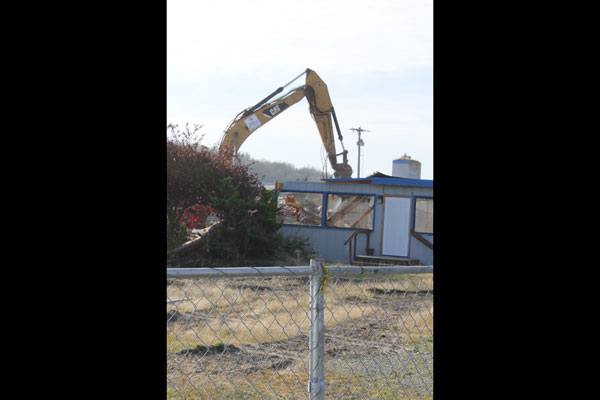The 3 Crabs Restaurant, a fixture of seashore dining since 1958, is no more.
Over the past three weeks the structure was demolished and removed by 3 Kings Environmental under a contract with the North Olympic Salmon Coalition.
The coalition is working on a restoration plan for the area where the restaurant formerly sat. The recent work was paid for through a $261,963 grant from the Estuary and Salmon Restoration Program (ESRP) and the U.S. Environmental Protection Agency.
ESRP is managed by the Washington Department of Fish and Wildlife in partnership with the Recreation and Conservation Office.
Fish and Wildlife recently purchased the restaurant and 52 acres, adjoining the land to the North Olympic Wildlife Area, which is managed by the department to provide fish and wildlife habitat as well as public access for outdoor recreation,
The department considered the property a high priority, saying, “The Dungeness River and Meadowbrook Creek estuary and associated coastal wetlands are documented as the most significant habitat areas for a wide diversity of wildlife and fish including marine mammals, seabirds, migratory shorebirds, waterfowl, neotropical migrants, raptors, salmonids, shellfish and Dungeness crab.”
Restoring the estuary
Tearing down the 3 Crabs is just one step in a larger project. The coalition also is developing conceptual plans and securing permits to restore the 3 Crabs nearshore and estuary.
When they’re completed the proposed restoration actions will help bring the Dungeness River delta back to a full productive life by restoring freshwater input, tidal flow and sediment transport within Meadowbrook Creek, the delta and Dungeness Bay.
To further that end, dike and bank armoring would be removed from Meadowbrook Creek, allowing the water to move further afield.
The plan also calls for the removal and re-contouring of five acres of estuary fill to their historical salt marsh, dune and intertidal elevations; removal of nearshore armoring; removal of nearshore road fill; and rerouting of utilities underneath the project site to New Dungeness Light Station. The plan also calls for removing the 165 or so creosoted pilings in the water just offshore and the removal of approximately 10 tons of beached creosote debris from the nearshore.
The plan also may result in the realignment of Sequim-Dungeness Way and 3 Crabs Road, with the new route circumventing some of the more sensitive areas of the shoreline.
In the end, planners say, the public should have greater access to the area.
Reach Mark Couhig at mcouhig@sequimgazette.com.



